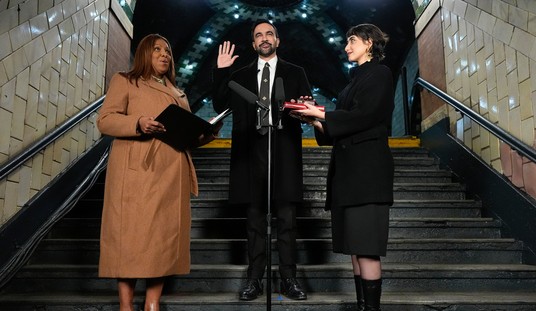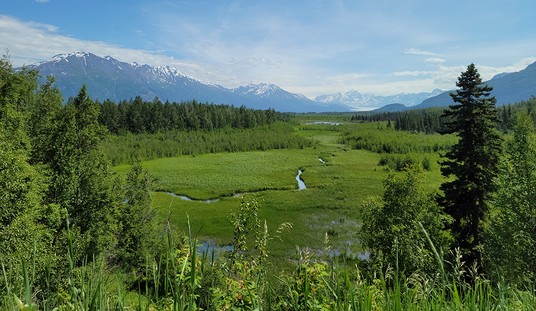If you, like me, have been following the whole climate change controversy for any time, you'll know, like me, that the science behind the claims of most of the scolds is pretty lacking. Most of the really vocal scolds, like Greta "Doom Pixie" Thunberg, really aren't very well-informed. Their arguments are emotional, not factual; most of them have never seen the "environment" they claim to revere, and they never talk about data, only about control.
There are people out there who are crunching the numbers. One such is Vaclav Smil, Distinguished Professor Emeritus in the Faculty of Environment at the University of Manitoba, who has spent the last half-century researching energy generation and use. Recently, RealClearScience's Ross Pomeroy interviewed Dr. Smil, and some of his comments were enlightening. Note that Dr. Smil does not approach energy generation and use from a socioeconomic basis; he's talking about techniques, outputs, and the hard and fast numbers.
It's worth the read. First, on small modular fission reactors:
When asked about their future I have had a simple answer ever since the 1980s. First, I used to say, “give me a call," then I changed that to “send me an e-mail” once you see such wonders built on schedule, on budget, and in aggregate capacities large enough to make a real difference to a country’s electricity supply (say at least 10% of the total).
US installed power capacity is now about 1.3 TW. Ten percent of that is 130 GW. Hence, even if SMRs were to average 100 MW, the US would need 1,300 of them to matter. If they averaged just 50 MW, then the country would need 2,600 of them. And that's before we even consider rising electricity use.
Then think of dealing 1,300 or 3,000+ times with public acceptance, siting selections, NIMBY controversies and lawsuits, regulatory requirements, constructions schedules and major cost overruns (all major projects are notoriously prone to that fate). Obviously, that e-mail announcing SMRs making discernible difference, nationally or globally, is not coming during this decade . . . or the next one.
Note that the reasons behind Dr. Smil's skepticism appear to have nothing to do with the technology itself. It is, as he points out, a matter of public acceptance - bear in mind that the legacy media has been fear-mongering about nuclear power for half a century now. Add that to NIMBYism and the other stumbling blocks and the problem with relying overly much on nuclear power becomes a social, not a technological issue. Now, President Trump has been making moves to deregulate nuclear power, which could make a big difference.
Second, on "decarbonization":
Decarbonizing electricity generation is technically straightforward, with known conversions (now dominated by wind turbines and PV cells) and system arrangements (substantial storage and transmission). And there are other effective choices: the world still has a huge untapped hydro capacity and a new generation of fission reactors could supply base demand. In contrast, decarbonizing what I have called the four pillars of modern civilization -– ammonia, steel, cement, and plastics -– is hard as there are no readily available technical fixes combining the needed output scale with affordability. Basic calculations reveal the extent of these global challenges.
Here is where Dr. Smil brings the numbers:
Without Haber-Bosch synthesis of ammonia we could not, even with assiduous recycling of organic wastes, feed more than about half of humanity. This synthesis is now responsible for less than 2% of global CO₂ emissions, mostly from the production of hydrogen by natural gas reforming. Steel and cement are the two largest, indispensable infrastructural materials. Primary steel production is responsible for 7-9% of global CO₂ emissions, above all from blast furnaces fuelled by metallurgical coke. Cement production (calcination process) generates 7-8% of global CO₂ emissions. And now ubiquitous plastics add 4-6% of global CO₂ emissions from the energy-intensive production of petrochemicals used as feedstocks and energy sources. Together, these industries contribute 20-25% of total global CO₂ emissions. And then there are non-energy uses of fossil fuels as feedstocks required for plastics production as feedstocks and for lubricants (5-6% of total global primary energy use).
None of these technologies can be easily replaced. In fact, as Dr. Smil points out, without the synthesis of ammonia, half of the world could face death by starvation, not that this would upset or even concern many of the climate scolds. They are, like useful idiots of every stripe, convinced that they'll be the ones walking around with clipboards when the "Revolution" comes, instead of being the known trouble-makers who will be tossed unceremoniously into the gulags.
See Also: Earth's Climate Has Amazing Capacity for Self-Regulation
Climate Oscillations: Some of the Factors That Really Drive Climate
Here's the thing: Our modern civilization cannot survive without these four pillars of modern civilization: ammonia, steel, cement, and plastics. Everything depends on those, from the food we eat to the buildings we live and work in to the structure of all of our possessions, from cellular phones to automobiles. There are no substitutes.
What Dr. Smil does hold out hope for is efficiency: In other words, solving today's problems with tomorrow's technology.
Eventually, efficiencies always make the greatest difference. Here are just two prominent examples. The first gas turbine (1939) generated electricity with 17% efficiency, now Siemens will sell you one that is 64% efficient. Boeing 787 uses 69% less jet fuel per revenue passenger kilometer than did the first commercial Boeing 707 in 1958. But these gains are usually incremental, spanning decades. Light emitting diodes (LEDs) have been a notable exception.
Increases, not decreases, in technological development. Innovation, not regression. Efficiency, not a backslide to a 19th-century technology level.
This is how an actual scientist looks at things: With a hard grasp of the numbers, a coldly analytical look at what's really happening, and what can be done to change it. Dr. Smil and I probably wouldn't agree on political issues; he's not a fan of economic growth, and some of his other work has drawn the admiration of people like Bill Gates. Even so, he is within his lane here in this interview, and he demonstrates an encyclopedic knowledge of energy generation and use that we will never see from anyone on the Luddite climate-panicking left.















